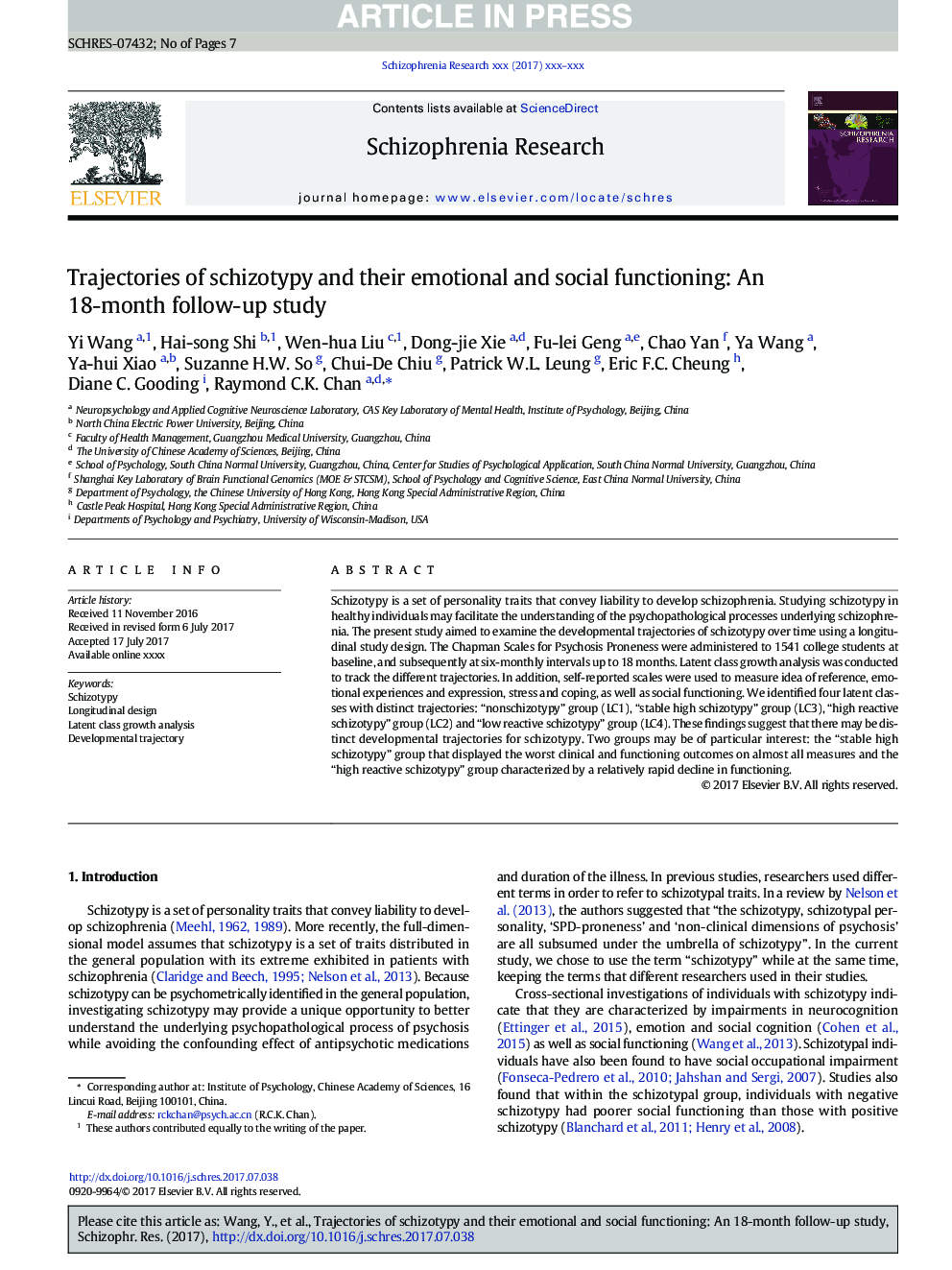| Article ID | Journal | Published Year | Pages | File Type |
|---|---|---|---|---|
| 6822004 | Schizophrenia Research | 2018 | 7 Pages |
Abstract
Schizotypy is a set of personality traits that convey liability to develop schizophrenia. Studying schizotypy in healthy individuals may facilitate the understanding of the psychopathological processes underlying schizophrenia. The present study aimed to examine the developmental trajectories of schizotypy over time using a longitudinal study design. The Chapman Scales for Psychosis Proneness were administered to 1541 college students at baseline, and subsequently at six-monthly intervals up to 18Â months. Latent class growth analysis was conducted to track the different trajectories. In addition, self-reported scales were used to measure idea of reference, emotional experiences and expression, stress and coping, as well as social functioning. We identified four latent classes with distinct trajectories: “nonschizotypy” group (LC1), “stable high schizotypy” group (LC3), “high reactive schizotypy” group (LC2) and “low reactive schizotypy” group (LC4). These findings suggest that there may be distinct developmental trajectories for schizotypy. Two groups may be of particular interest: the “stable high schizotypy” group that displayed the worst clinical and functioning outcomes on almost all measures and the “high reactive schizotypy” group characterized by a relatively rapid decline in functioning.
Related Topics
Life Sciences
Neuroscience
Behavioral Neuroscience
Authors
Yi Wang, Hai-song Shi, Wen-hua Liu, Dong-jie Xie, Fu-lei Geng, Chao Yan, Ya Wang, Ya-hui Xiao, Suzanne H.W. So, Chui-De Chiu, Patrick W.L. Leung, Eric F.C. Cheung, Diane C. Gooding, Raymond C.K. Chan,
